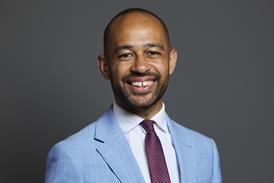Equality: numbers of female and ethnic minority judges are rising, but firms can do more
Law centres are threatening to end co-operation with the Legal Services Commission (LSC) in protest at funding cuts.
At a special meeting last week, the country's 60 law centres called for a rolling campaign over a financial crisis which they say has been caused by the LSC's and local authorities' decisions to squeeze funding.
Some 50% of law centre funding currently comes from the LSC and around 40% from local government. It is feared that fixed fees could lead to a 20% reduction in services as well as a reduction in specialist casework.
John Fitzpatrick, chairman of the Law Centres Federation, said the LSC's plan to introduce fixed fees was effectively 'dumbing down legal services'.
He added: 'There will be an irresistible pressure to push more simple cases through the legal aid system at the expense of the complex cases all legal aid lawyers try to take up, and that law centres specialise in.'
The campaign will include demonstrations, media lobbying and non-cooperation with the LSC after 1 October 2007, when fixed fees are to be introduced.
A spokeswoman for the LSC insisted that fixed fees would not result in cuts. She said: 'We want to continue our investment in the not-for-profit (NfP) sector and our changes present a real opportunity for good NfP organisations.'
The LSC will work with the sector on transitional arrangements that will allow agencies to adjust, she added.
Jonathan Rayner
The number of female and ethnic minority judges is on the increase, but law firms must do more to ensure progress on judicial diversity, a government minister said this week.
Speaking at a Law Society seminar aimed at encouraging solicitors to apply for judicial office, Department for Constitutional Affairs (DCA) minister Harriet Harman said the judiciary must reflect the population it served, or it would be too easy for the public to feel it was discriminatory.
But she added: 'Until the profession itself is more diverse, the scope for a more diverse judiciary is constrained.'
Research published this week revealed that, since 1999, the proportion of women appointed to judicial office has risen from 24% to 41%, which has taken the total percentage of women on the bench from 14% to 18%. However, they still account for less than 1% of the senior judiciary.
Over the same period, the number of black and ethnic minority judges appointed increased from 9% to 14%, and they now account for 4% of the bench.
'By mostly selecting judges from certain backgrounds, the justice system is missing out on a pool of people with the necessary talent and skills for judicial office,' said Ms Harman.
The minister confirmed that appointment should be based on merit, and ruled out the prospect of all-women short lists. However, she added that there would not be merit-based appointments if a whole range of people who would otherwise be considered are excluded.
She said the DCA has already changed the eligibility criteria and introduced initiatives such as salaried part-time sitting and career breaks to increase diversity, and in future former judges may be allowed to return to practise.
In a speech to the Association of Women Solicitors last week, Mrs Justice Dobbs said these measures made the job more attractive and suited to the needs of many women.
However, she said the main issue to be addressed by solicitors was to demonstrate to senior partners the benefits of having someone at the firm who sat as a judge.
Catherine Baksi
Charity Explorer provides a reputable reference tool for solicitors, will-writers and their clients who want to leave a legacy or charitable gift.
Visit Charity Explorer
Whether you are looking for legal expert witnesses, legal training/CPD providers, international law firms, administration of estates, legal software suppliers, barristers chambers or any other general legal service, the Legal Services Directory will provide a suitable option.
Visit Legal Services Directory

























No comments yet